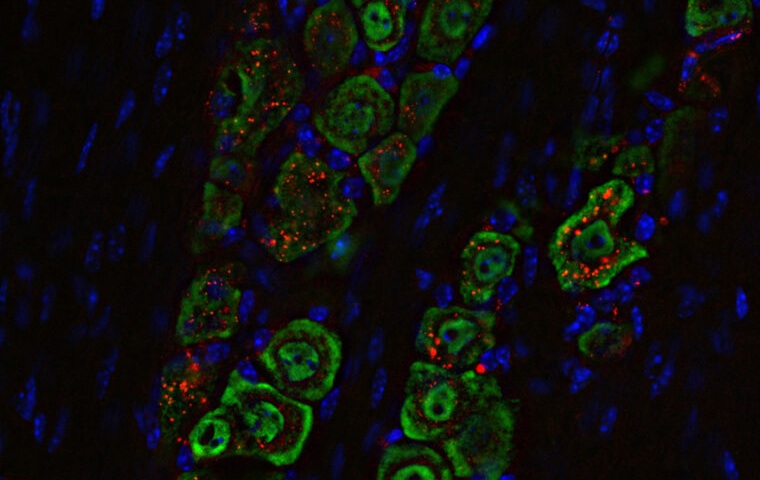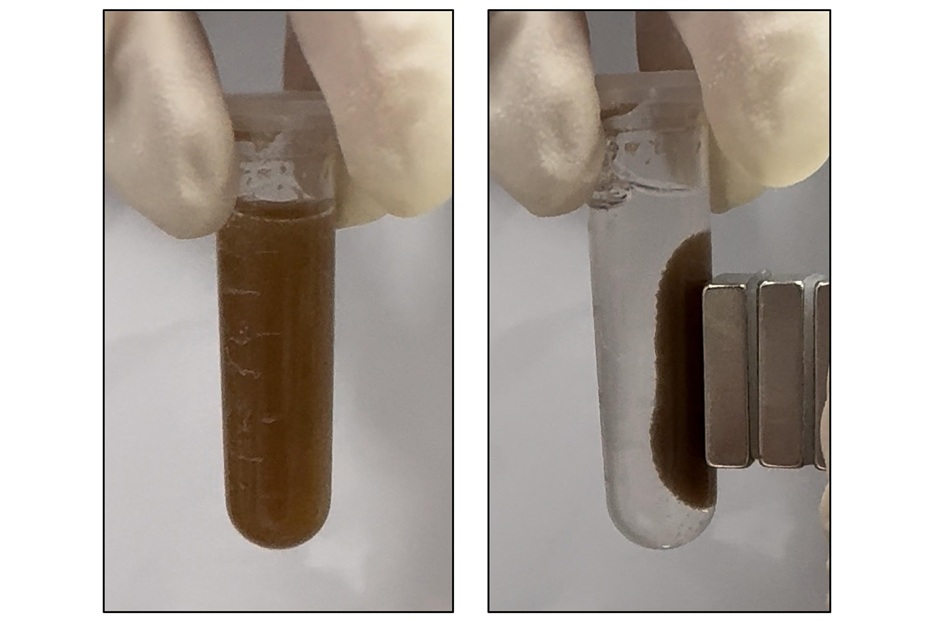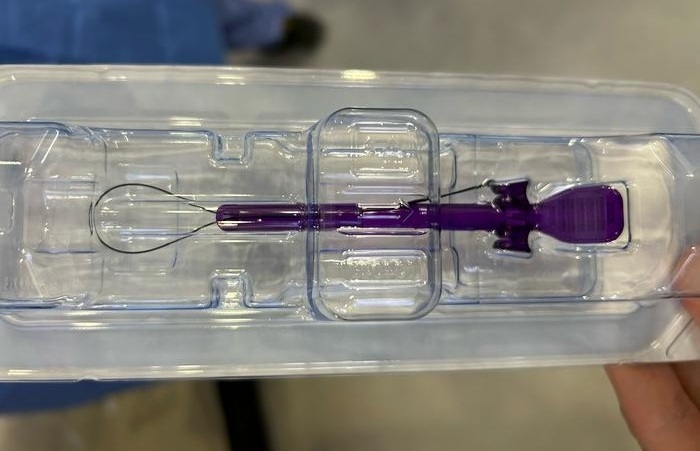Researchers Develop AI Algorithm to Predict Immunotherapy Response
|
By HospiMedica International staff writers Posted on 12 Sep 2018 |
A team of French researchers have designed an algorithm and developed it to analyze Computed Tomography (CT) scan images, establishing for the first time that artificial intelligence (AI) can process medical images to extract biological and clinical information. The researchers have created a so-called radiomic signature, which defines the level of lymphocyte infiltration of a tumor and provides a predictive score for the efficacy of immunotherapy in the patient.
In the near future, this could make it possible for physicians to use imaging to identify biological phenomena in a tumor located anywhere in the body without performing a biopsy.
Currently, there are no markers, which can accurately identify patients who will respond to anti-PD-1/PD-L1 immunotherapy in a situation where only 15 to 30% of patients do respond to such treatment. The more immunologically richer the tumor environment (presence of lymphocytes), the higher is the chances of immunotherapy being effective. Hence, the researchers tried to characterize this environment using imaging and correlate this with the patients’ clinical response. In their study, the radiomic signature was captured, developed and validated genomically, histologically and clinically in 500 patients with solid tumors (all sites) from four independent cohorts.
The researchers first used a machine learning-based approach to teach the algorithm how to use relevant information extracted from CT scans of patients participating in an earlier study, which also held tumor genome data. Thus, based solely on images, the algorithm learned to predict what the genome might have revealed about the tumor immune infiltrate, in particular with respect to the presence of cytotoxic T-lymphocytes (CD8) in the tumor, thus establishing a radiomic signature.
The researchers tested and validated this signature in other cohorts, including that of TCGA (The Cancer Genome Atlas), thus demonstrating that imaging could predict a biological phenomenon, providing an estimation of the degree of immune infiltration of a tumor. Further, in order to test the signature’s applicability in a real situation and correlate it to the efficacy of immunotherapy, it was evaluated using CT scans performed before the start of treatment in patients participating in five phase I trials of anti-PD-1/PD-L1 immunotherapy. The researchers found that the patients in whom immunotherapy was effective at three and six months had higher radiomic scores as did those with better overall survival.
In their next clinical study, the researchers will assess the signature both retrospectively and prospectively, using a larger number of patients and stratifying them based on cancer type in order to refine the signature. They will also use more sophisticated automatic learning and AI algorithms to predict patient response to immunotherapy, while integrating data from imaging, molecular biology and tissue analysis. The researchers aim to identify those patients who are most likely to respond to treatment, thereby improving the efficacy/cost ratio of treatment.
In the near future, this could make it possible for physicians to use imaging to identify biological phenomena in a tumor located anywhere in the body without performing a biopsy.
Currently, there are no markers, which can accurately identify patients who will respond to anti-PD-1/PD-L1 immunotherapy in a situation where only 15 to 30% of patients do respond to such treatment. The more immunologically richer the tumor environment (presence of lymphocytes), the higher is the chances of immunotherapy being effective. Hence, the researchers tried to characterize this environment using imaging and correlate this with the patients’ clinical response. In their study, the radiomic signature was captured, developed and validated genomically, histologically and clinically in 500 patients with solid tumors (all sites) from four independent cohorts.
The researchers first used a machine learning-based approach to teach the algorithm how to use relevant information extracted from CT scans of patients participating in an earlier study, which also held tumor genome data. Thus, based solely on images, the algorithm learned to predict what the genome might have revealed about the tumor immune infiltrate, in particular with respect to the presence of cytotoxic T-lymphocytes (CD8) in the tumor, thus establishing a radiomic signature.
The researchers tested and validated this signature in other cohorts, including that of TCGA (The Cancer Genome Atlas), thus demonstrating that imaging could predict a biological phenomenon, providing an estimation of the degree of immune infiltration of a tumor. Further, in order to test the signature’s applicability in a real situation and correlate it to the efficacy of immunotherapy, it was evaluated using CT scans performed before the start of treatment in patients participating in five phase I trials of anti-PD-1/PD-L1 immunotherapy. The researchers found that the patients in whom immunotherapy was effective at three and six months had higher radiomic scores as did those with better overall survival.
In their next clinical study, the researchers will assess the signature both retrospectively and prospectively, using a larger number of patients and stratifying them based on cancer type in order to refine the signature. They will also use more sophisticated automatic learning and AI algorithms to predict patient response to immunotherapy, while integrating data from imaging, molecular biology and tissue analysis. The researchers aim to identify those patients who are most likely to respond to treatment, thereby improving the efficacy/cost ratio of treatment.
Channels
Critical Care
view channel
Nasal Drops Fight Brain Tumors Noninvasively
Glioblastoma is one of the most aggressive and fatal brain cancers, progressing rapidly and leaving patients with very limited treatment options. A major challenge has been delivering effective therapies... Read more
AI Helps Optimize Therapy Selection and Dosing for Septic Shock
Septic shock is a life-threatening complication of sepsis and remains a leading cause of hospital deaths worldwide. Patients experience dangerously low blood pressure that can rapidly lead to organ failure,... Read more
Glowing Bacteria ‘Pills’ for Detecting Gut Diseases Could Eliminate Colonoscopies
Diagnosing gastrointestinal diseases such as colitis and colorectal cancer often relies on colonoscopy, an invasive procedure that many patients avoid despite ongoing symptoms like bleeding, cramping, and diarrhoea.... Read moreSurgical Techniques
view channelNovel Endoscopy Technique Provides Access to Deep Lung Tumors
Detecting lung cancer early can save lives, but diagnosing small tumors deep in the outer regions of the lungs remains a major clinical challenge. Although CT scans frequently identify tiny suspicious... Read more
New Study Findings Could Halve Number of Stent Procedures
When a coronary artery becomes acutely blocked during a heart attack, opening it immediately is essential to prevent irreversible damage. However, many patients also have other narrowed vessels that appear... Read morePatient Care
view channel
Revolutionary Automatic IV-Line Flushing Device to Enhance Infusion Care
More than 80% of in-hospital patients receive intravenous (IV) therapy. Every dose of IV medicine delivered in a small volume (<250 mL) infusion bag should be followed by subsequent flushing to ensure... Read more
VR Training Tool Combats Contamination of Portable Medical Equipment
Healthcare-associated infections (HAIs) impact one in every 31 patients, cause nearly 100,000 deaths each year, and cost USD 28.4 billion in direct medical expenses. Notably, up to 75% of these infections... Read more
Portable Biosensor Platform to Reduce Hospital-Acquired Infections
Approximately 4 million patients in the European Union acquire healthcare-associated infections (HAIs) or nosocomial infections each year, with around 37,000 deaths directly resulting from these infections,... Read moreFirst-Of-Its-Kind Portable Germicidal Light Technology Disinfects High-Touch Clinical Surfaces in Seconds
Reducing healthcare-acquired infections (HAIs) remains a pressing issue within global healthcare systems. In the United States alone, 1.7 million patients contract HAIs annually, leading to approximately... Read moreHealth IT
view channel
EMR-Based Tool Predicts Graft Failure After Kidney Transplant
Kidney transplantation offers patients with end-stage kidney disease longer survival and better quality of life than dialysis, yet graft failure remains a major challenge. Although a successful transplant... Read more
Printable Molecule-Selective Nanoparticles Enable Mass Production of Wearable Biosensors
The future of medicine is likely to focus on the personalization of healthcare—understanding exactly what an individual requires and delivering the appropriate combination of nutrients, metabolites, and... Read moreBusiness
view channel
Philips and Masimo Partner to Advance Patient Monitoring Measurement Technologies
Royal Philips (Amsterdam, Netherlands) and Masimo (Irvine, California, USA) have renewed their multi-year strategic collaboration, combining Philips’ expertise in patient monitoring with Masimo’s noninvasive... Read more
B. Braun Acquires Digital Microsurgery Company True Digital Surgery
The high-end microsurgery market in neurosurgery, spine, and ENT is undergoing a significant transformation. Traditional analog microscopes are giving way to digital exoscopes, which provide improved visualization,... Read more
CMEF 2025 to Promote Holistic and High-Quality Development of Medical and Health Industry
The 92nd China International Medical Equipment Fair (CMEF 2025) Autumn Exhibition is scheduled to be held from September 26 to 29 at the China Import and Export Fair Complex (Canton Fair Complex) in Guangzhou.... Read more
















